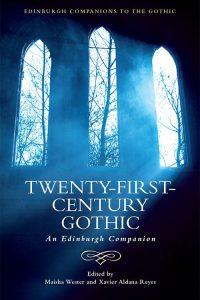2014
 With their themes of ghosts, violence and monstrosity, horror films have been instrumental in capturing the ghostly returns of collective trauma. Thai horror, unsurprisingly, also cannot disassociate itself from history. Through their ghosts and, more recently, through their turn to “body horror,” contemporary Thai horror films come to terms with the “wounds” in the country’s social fabric. The strategies of archivization of Thai history and cultural memory used in these films vary, since some traumatic incidents in Thai history have been denied the right to be remembered by the state apparatus. Other, less politically-repressed events, such as murders, accidents, or cases of gross negligence are meticulously reconstructed from available authentic sources and reproduced in Thai horror films, which take on the function of becoming the archives of Thai popular memory. This article discusses Thai horror films’ strategies of archivization of Thailand’s past.
With their themes of ghosts, violence and monstrosity, horror films have been instrumental in capturing the ghostly returns of collective trauma. Thai horror, unsurprisingly, also cannot disassociate itself from history. Through their ghosts and, more recently, through their turn to “body horror,” contemporary Thai horror films come to terms with the “wounds” in the country’s social fabric. The strategies of archivization of Thai history and cultural memory used in these films vary, since some traumatic incidents in Thai history have been denied the right to be remembered by the state apparatus. Other, less politically-repressed events, such as murders, accidents, or cases of gross negligence are meticulously reconstructed from available authentic sources and reproduced in Thai horror films, which take on the function of becoming the archives of Thai popular memory. This article discusses Thai horror films’ strategies of archivization of Thailand’s past.



 The chapter offers a selective survey of twenty-first-century Asian Gothic. The main focus of the discussion is the most prominent contemporary trend involving reconfigurations of Asian folklore and the ghost story. More specifically, this chapter investigates literary and film narratives dealing with individual and collective trauma that revolve around the figure of the vengeful ghost, texts which reclaim animism as inherent part of Asian modernity, and Asian Gothic’s interrogation of gender dynamics and empowered women. The first section of the essay discusses the emergence of the female vengeful ghost as the dominant figure of fear in Asian horror films. The second section examines the portrayal of ghosts in literature of the region and the way their haunting engages with historical trauma and socio-cultural anxieties of the time. The final part investigates narratives that highlight the connection of women to shamanism and magic and proposes to read female spirituality in terms of empowerment.
The chapter offers a selective survey of twenty-first-century Asian Gothic. The main focus of the discussion is the most prominent contemporary trend involving reconfigurations of Asian folklore and the ghost story. More specifically, this chapter investigates literary and film narratives dealing with individual and collective trauma that revolve around the figure of the vengeful ghost, texts which reclaim animism as inherent part of Asian modernity, and Asian Gothic’s interrogation of gender dynamics and empowered women. The first section of the essay discusses the emergence of the female vengeful ghost as the dominant figure of fear in Asian horror films. The second section examines the portrayal of ghosts in literature of the region and the way their haunting engages with historical trauma and socio-cultural anxieties of the time. The final part investigates narratives that highlight the connection of women to shamanism and magic and proposes to read female spirituality in terms of empowerment.